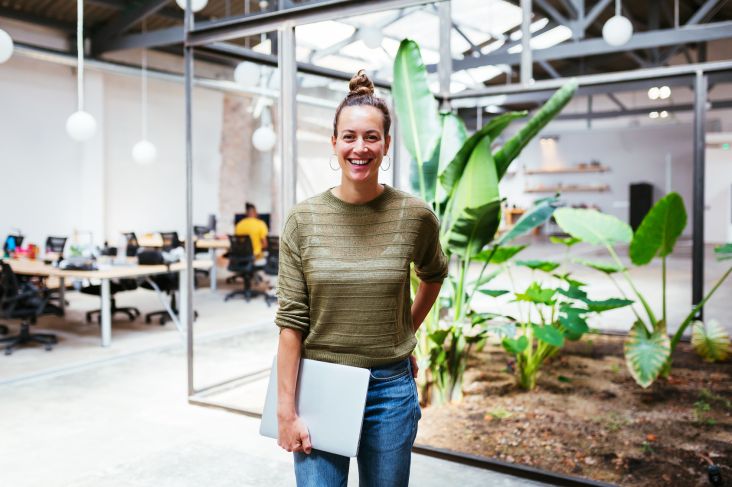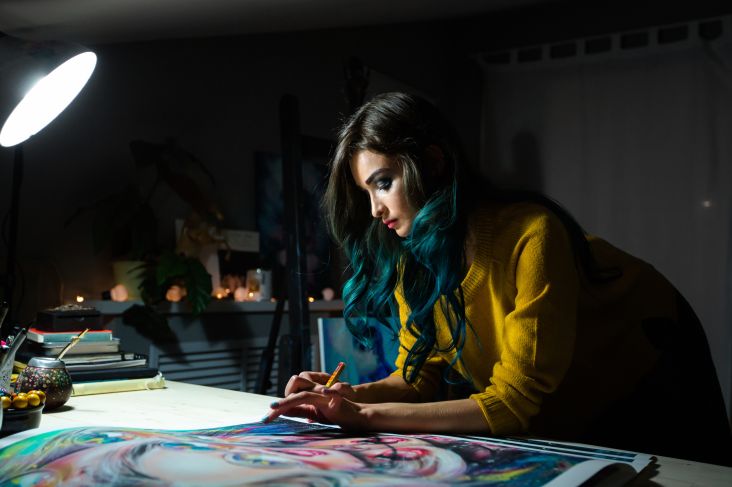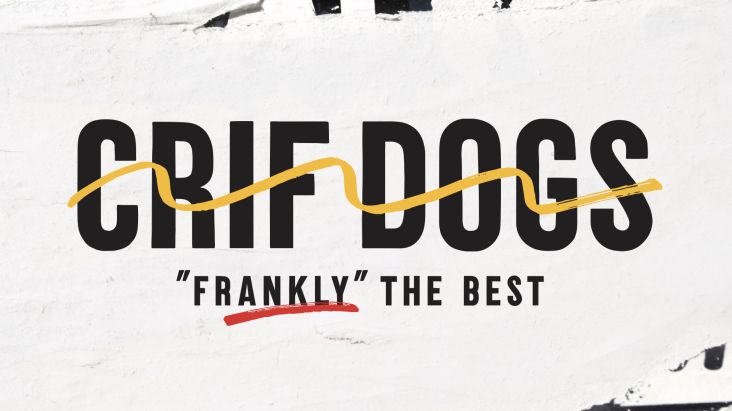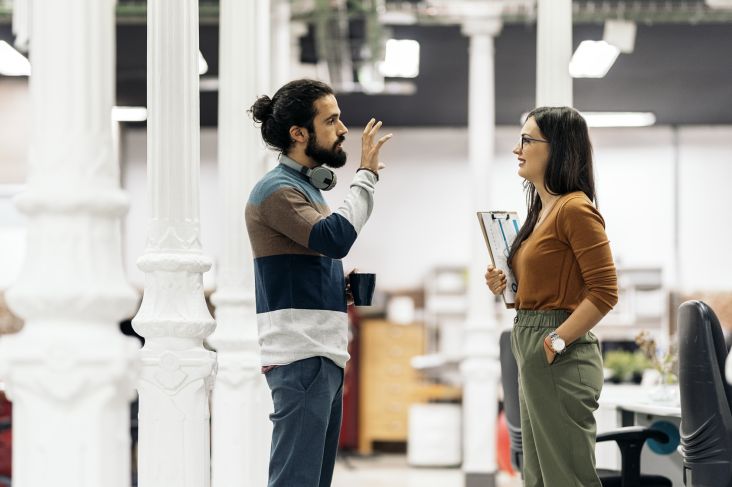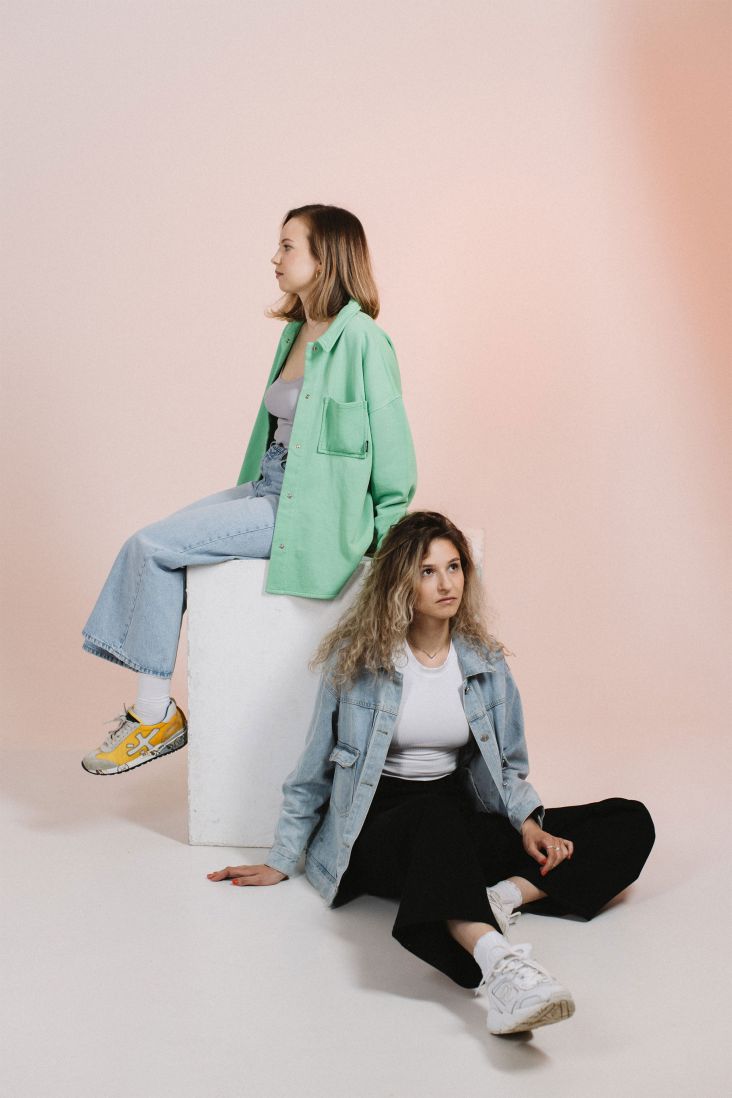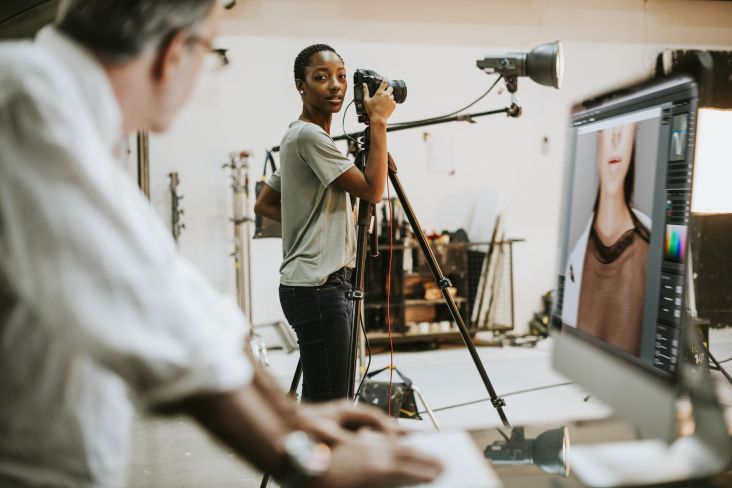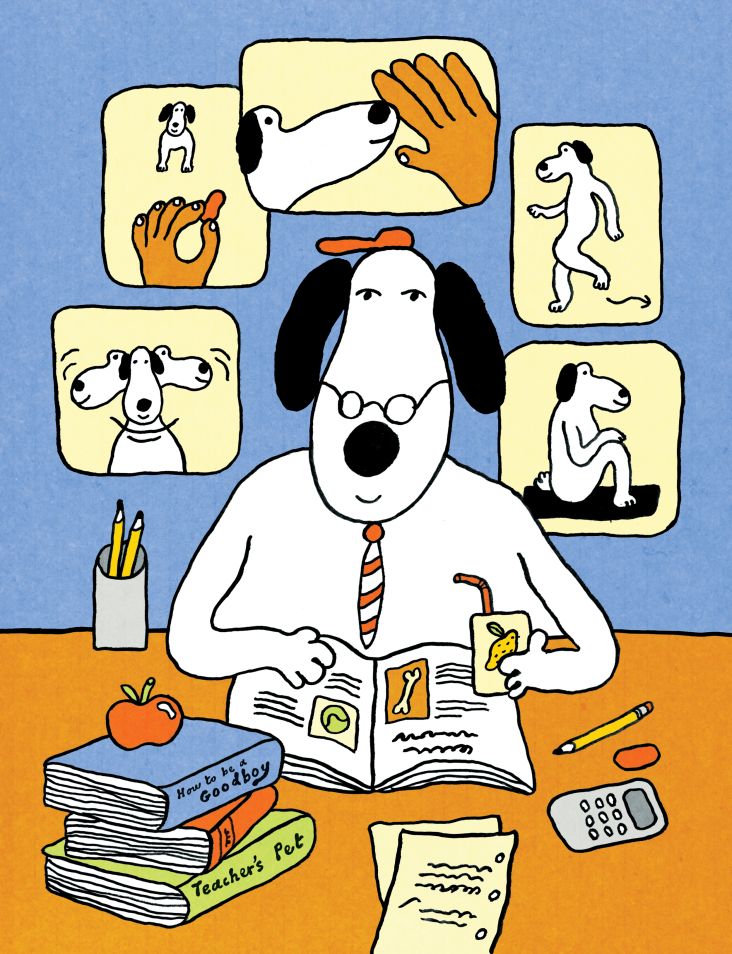How to pivot your creative career after realising the pandemic has changed you
There's been much talk amongst creative friends about how the pandemic has left many of us feeling a bit, well, adrift. The art and design we were conjuring up before Covid-19 might have lost its meaning for some, while for others, work may have changed beyond recognition. So what now? Here, we draw inspiration from how the creative industry has adjusted.
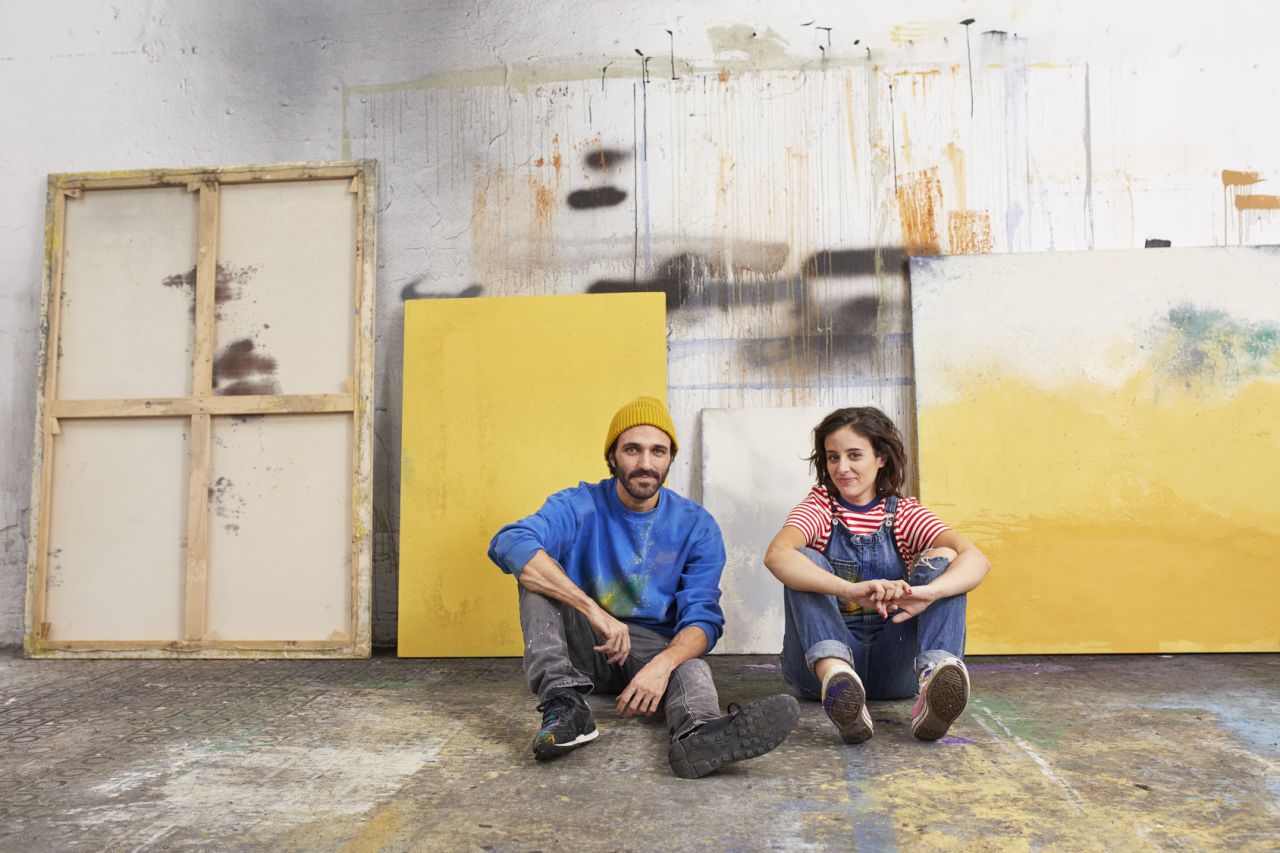
Image licensed via Adobe Stock
It wasn't just a scary new virus that forced us to slow down and reassess our entire lives last year; the pandemic impacted how we work, too. We stopped running, discovered flexible, remote working, and we found more time with family and friends – this, we all know. Some of us were made redundant and embraced freelancing. Those who already ran businesses learnt many lessons in survival. At the same time, others switched focus entirely and secured new jobs or found income in alternative creative endeavours.
And while all this was going on, the world changed as well. Massive cultural shifts were felt everywhere and across every age group. Yes, the older creatives amongst us experienced that inevitable realisation, that a whole generation of younger people is no longer just entering the creative scene but now leading it. But the youngsters felt a shift, too. What shifts precisely, we're still figuring out. The history books of tomorrow will undoubtedly deem this era to be one of the most profound of the 21st century.
So, where does that leave creative professionals today? And how can we navigate through these unchartered choppy waters as we figure out how to adjust? We asked the creative community for their experiences, so if you've been a little bewildered of late, the following ideas might help.
1. Embrace a passion project or switch focus
The pandemic gave many of us more time. Time to think, time to play, time to experiment. With no work, we could suddenly take stock and work on those passion projects we'd always been putting off. Graphic designer and digital illustrator Doaly experienced just this: "I had more time to peruse a dream to create comic book covers," he tells us. "Since lockdown, I've illustrated 15 covers to date, something that wouldn't have been possible without certain projects being cancelled or postponed."
Graphic designer, illustrator and silkscreen printer, Graham Pilling has been freelancing for over a decade, and although he'd always sold his own posters and art prints, the bulk of his income came through client work. It wasn't until the pandemic hit that things really shifted for him. After work dried up, Graham wrote a business plan of how he wanted to change. Since then, he's gradually moved towards being a landscape print artist and less reliant on client work. "This has not been an easy 'flick of a switch' change, just small steps," Graham says. "Last week, I finished a new ten colour, landscape screenprint which was a few months work. A big and ambitious project. The response has been excellent, and I'm excited to work on my next piece."
By focusing on landscape art, Graham is feeling a lot happier. You can read more about his new adventure on his blog, where he hopes to encourage others to reap the same benefits by getting out into the countryside. "I'm also donating portions of what I make from sales of this work to organisations or charities focusing on environmental issues. The public engagement and environmental aspects are something that has been growing in importance to me. I want my work to have some connection to these issues."
"My situation isn't particularly dramatic," he adds, "It's still a work in progress. The main thing is a feeling of confidence that my change in focus is the right thing to do."
2. Learn a new skill
Many found time during the pandemic to learn new things and boost skills. For those who had to carry on working, like Rachel Turner, they made time. The Bristol-based illustrator negotiated a four-day workweek with her boss, so she could focus a little on her art practice. "I'd taken some local adult education classes to help, then in 2020, all kinds of brilliant classes were suddenly open to me via Zoom. Now I have a portfolio and think I'm ready to go," she says.
What about opting for something complementary? For instance, motion design and animation increasingly seem to be a "thing" for many graphic designers and illustrators. Berlin-based Rob Barrett had a rough time in 2020, but things soon turned around when he ventured into this creative field: "At the start of the pandemic, I lost all client work and didn't earn a penny for six months. I spent the time pivoting more fully to motion from graphic design. Currently on track to earn two or three times more in a year than ever before, and passionate about the work."
3. Do something more meaningful
If you're feeling a little frustrated with the world and want to do something to make a difference, then there are many approaches you can consider.
Designer Vincent Walden was made redundant during the pandemic and not only transitioned to working for himself but also left publishing entirely to operate a sustainable, eco-friendly design studio. "Publishing is a highly polluting sector," he tells us. "I've gone from playing a part in the production of thousands of printed books each year to offsetting twice my annual carbon footprint, reducing emissions to a minimum and running my own studio powered by renewable energy." And he believes he's the first to take this step in his area.
Laura McHard was another to be made redundant last year. With time on her hands, she started doing work that makes a difference, or "creativity for good", as she puts it. She set up After Pandemic to enable communities to collaborate on creative projects that "impact societies, cities and the climate for the better". "It's a grassroots initiative, and it's going really well so far," Laura tells us. "Musicians, artists, designers, architects all collaborating together to work on some really interesting projects that help to rethink, reimagine and redesign the world around us. We've been running design schools, online events and creating content for communities. Now we're planning a creative fringe and exhibition at COP26 – and delighted to be backed by the likes of LEGO and Ellen MacArthur Foundation."
Creative Director Sravya Attaluri was working for a global digital agency on a lot of corporate/commercial client projects, and as the pandemic kicked off, she felt extremely frustrated with the "lack of empathy, awareness or resources for people impacted". So she quit her job to switch to illustration and design focused on social impact, specifically around mental health and equality. "My practice since then relies on applying my design and illustration skills for projects that cause an emotional reaction or drive action and positive change. I didn't know it was a practice that I could actually support myself with financially, and I'm so thankful for how things have turned out," she says.
4. Go freelance (or prepare to do so)
For those of you who lost jobs or realised working for someone else wasn't for you, launching your own business became a reality. Freelancing might have been on your wishlist for a while, but it's always a scary leap. For Carina Lindmeier, she finally found the time to become a full-time freelance illustrator. "It was the best thing that could have happened to me in my career. I was able to use the time really well and take care of my portfolio and my own projects. I am so thankful that it really worked out," she says.
Designer and illustrator Mel Langton agrees: "I got made redundant from my part-time job of 10 years last October and so made the terrifying leap to being a full-time freelance artist and never looked back. It's been scary stuff but ultimately exhilarating and rewarding."
It's that spark of confidence – when the crap hits the fan – that we all think, what have we got to lose? Kev Charlton, a Liverpool-based designer and creative director, left his agency job of 15 years to start his own thing. "I wanted to get more involved in creating rather than directing! Having more time to freelance during lockdown (to save up a financial buffer) was a game-changer," he says.
It was also the kick illustrator Hannah Gillingham needed: "I've since worked on my first client job and have been welcomed with open arms into the poster community and have been growing my poster portfolio," she says.
5. Start a side project or build something new
It's amazing what can come out of a creative pursuit – one that's not entirely related to what you do now. Graphic designer James Bristow built a DIY screenprinting workshop and has been creating limited-edition typographic and abstract prints ever since. "It's given me freedom from – and complement to – the constraints of commercial graphic design. And inky fingers."
For Rich C Studio, the pandemic gave him renewed energy, and he spent lockdowns building his own garden studio – with help from his dad. "It has completely changed my attitude to my practice," he explains. "I have gained confidence and now feel ready to market myself as an independent designer. I've recently rebranded and relaunched my website, and I'm looking to go fully freelance early next year."
After Monique Jackson caught the virus last year, she had to stop working and suffered ongoing symptoms for months afterwards. As it was something new and scary because so little information or awareness was available, she began to draw her experience, creating Still Ill: Corona Diary. It proved so popular it was picked up everywhere and has become the main focus for Monique, sharing helpful resources for others and fundraising for Covid-19 charities. Monique now gives talks – a recent one took place at the Royal College of Art.
"Since creating this project, I have enjoyed the challenge of collaborating with others, particularly those with medical backgrounds, in different ways; making infographics, surveys and illustrations to accompany texts," Monique tells Creative Boom. "I am inspired by people and organisations that use their platforms to further advocacy. And in the last year, I have learned more about the importance of visibility for Long Covid and how visual communication skills can be utilised to bring attention to issues surrounding public health."
6. Slow down and enjoy the process
Would it do any harm to revisit old or traditional techniques? Or perhaps get utterly lost in the process? This is what many creatives seem to be doing: finding joy in the actual making again. From returning to previous practices, many people are rediscovering what makes them happy, and, in many cases, that means changing pace.
Fin Tams-Gray is a digital designer from Scotland who told us: "The pandemic was an opportunity to slow down and reevaluate the processes and techniques I was using. I had time to reflect and make more critical decisions about what kind of projects I want to work on in future."
Ryan Mason, a co-founder of Glory Mag, began exploring with medium format film photography: "It helped me creatively slow down and think about composition and processes." While Becky Orlinski wanted to be an illustrator pre-pandemic until she started experimenting with other mediums: "I've completely fallen in love with collage, and I'm a far more confident artist and designer because of it."
7. Change how and where you work forever
Bigger shifts are being felt elsewhere, particularly in where we work. Brian Collins, the chief creative officer of COLLINS, shared his experience: "First, we sent everyone home. Everyone liked being at home. So we dumped 10,000 sq. ft. of Union Square office space. Then we built a design clubhouse in Brooklyn with 5,125 books, a meditation room, skylit workshop/TV studio and a full kitchen to breakfast and lunch."
Gareth Rutter, founder and creative director of Bellow Studio in Bristol, has also felt a shift to more remote working but has seen positive changes with clients, too. "Pre-pandemic, the idea of a decentralised studio was a hard sell; post-first wave and clients lapped it up."
While expensive office space isn't such a requirement anymore, and many larger agencies finding a more hybrid approach, others are enjoying a more localised way of working. For May Wild Studio, a social arts practice run by Rebecca May and Michael Wild, they lost almost all of their work at the beginning of the pandemic but have seen the crisis as an opportunity to change how they operate: "We had always hoped to develop our practice towards more participatory and sustainably-led projects, focusing on working closer to home and the communities around us. We've now shifted towards this," says Rebecca.
For those businesses based in parts of the world that don't have huge markets, the rise of remote working has opened doors for them. David López co-founded Studio Mondos in Honduras this year and has clients all over the world. "It has been challenging, but that makes it worthwhile," he says. "We are confident that through smart and hard work, we will have great success."
Sravya Attaluri adds: "Remote work has opened up so many more possibilities for me, I was stuck in Hong Kong, where there are barely any opportunities, and with remote work increasing, I found that my location was no longer a barrier to my dream jobs."
Conclusion
Disasters such as pandemics can hit hard and really shake up how we live and work. But as C.S. Lewis once said, "Hardships often prepare ordinary people for an extraordinary destiny". This wisdom can be seen in how many of you have responded and adjusted over the last couple of years.
But not all of you found that same energy, nor had the chance or privilege to do so. If you've been feeling a little lost lately and you've not shared a similar experience to the success stories above, then don't feel disheartened. Our aim is to give you inspiration, motivating you to consider your next steps.
Perhaps your new adventure begins by answering these simple questions: what makes you happy? And what one small step can you take today to help you get to where you want to be? It might be a book, an online course, a chat with a friend, or a switch to a four-day workweek. Whatever it is, it's amazing how quickly you can find yourself changing creative direction. What do you want to be doing 12 months from now?




 by Tüpokompanii](https://www.creativeboom.com/upload/articles/58/58684538770fb5b428dc1882f7a732f153500153_732.jpg)


 using <a href="https://www.ohnotype.co/fonts/obviously" target="_blank">Obviously</a> by Oh No Type Co., Art Director, Brand & Creative—Spotify](https://www.creativeboom.com/upload/articles/6e/6ed31eddc26fa563f213fc76d6993dab9231ffe4_732.jpg)








